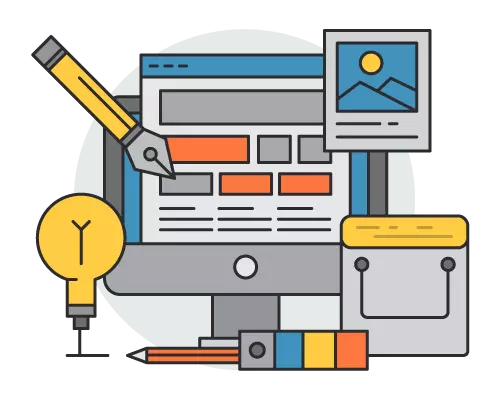Web designers are professionals responsible for creating the layout, visual appearance, and usability of websites.
They combine technical skills with creative design principles to produce websites that are not only visually appealing but also functional and user-friendly.
Depending on the project’s scope, website design can be done by freelance web designers, web design agencies, or in-house teams.
Types of Web Designers
1. Freelance Web Designers
Freelance web designers are independent professionals who design websites on a project-by-project basis.
They usually handle all aspects of the design process, from concept creation to development.
Freelancers are typically more affordable than agencies and provide a personalized service, making them a great option for small businesses and startups.
Best For:
- Small businesses, startups, and personal projects.
- Those looking for cost-effective design solutions.
Pros:
- Flexible pricing and services.
- Direct communication with the designer.
Cons:
- Limited resources for large-scale projects.
- May lack the backup or support that a larger team provides.
2. Web Design Agencies
A web design agency is a company that specializes in designing and developing websites.
Agencies typically have teams of designers, developers, content creators, and SEO specialists.
They offer a full-service solution, from design to maintenance, and can handle larger and more complex projects.
Best For:
- Medium to large businesses needing comprehensive design and development services.
- Projects requiring multiple skill sets (e.g., web development, UX design, and SEO).
Pros:
- Access to a team of experts.
- Ability to manage large-scale projects.
Cons:
- Higher costs compared to freelancers.
- Longer turnaround times.
3. In-House Web Designers
In-house web designers are employees of a company who are dedicated to designing and maintaining the company’s website.
They typically work alongside other departments, such as marketing and IT, to ensure the website aligns with the company’s overall goals and branding.
Best For:
- Larger companies with ongoing website design and maintenance needs.
- Businesses that require frequent updates or changes to their website.
Pros:
- Immediate availability for changes and updates.
- Deep understanding of the company’s goals and branding.
Cons:
- Higher operational costs compared to outsourcing.
- Limited to the skills of the in-house team.
Roles Involved in Website Design
1. UX Designers
User experience (UX) designers focus on making websites intuitive and easy to use.
They are responsible for designing the flow of the website, ensuring that users can navigate the site effortlessly and find the information they need.
Responsibilities:
- Conducting user research to understand audience behavior.
- Creating wireframes and prototypes for testing.
- Improving usability and accessibility.
2. UI Designers
User interface (UI) designers are responsible for the website’s visual appearance.
They choose the color schemes, fonts, and design elements that create an attractive and cohesive interface.
Responsibilities:
- Designing visual elements like buttons, menus, and forms.
- Ensuring the website is aesthetically pleasing and aligns with branding.
- Creating a responsive design for various devices.
3. Front-End Developers
Front-end developers take the design created by UX/UI designers and bring it to life using coding languages like HTML, CSS, and JavaScript.
They ensure that the website is functional, interactive, and responsive on all devices.
Responsibilities:
- Translating designs into code.
- Ensuring the website is responsive and works on all browsers and devices.
- Adding interactivity using JavaScript and other technologies.
4. Back-End Developers
Back-end developers manage the server-side functions of a website, including databases and server interactions.
They ensure that the website can handle user requests, store data, and interact with other systems like payment gateways.
Responsibilities:
- Developing and maintaining server-side functions.
- Managing databases and server interactions.
- Ensuring the website performs smoothly and securely.
5. Full-Stack Developers
Full-stack developers are skilled in both front-end and back-end development.
They can handle all aspects of a website’s development, from the visual design to the server-side functions.
Responsibilities:
- Handling both the client-side and server-side development.
- Ensuring seamless integration between the website’s front-end and back-end.
Conclusion
Web designers come in various forms, from freelancers to in-house teams and web design agencies.
Freelancers are ideal for small projects, while agencies are better suited for larger, more complex sites.
UX/UI designers focus on aesthetics and usability, while front-end and back-end developers ensure the technical functionality of the site.
Choosing the right web designer depends on your project’s needs, budget, and long-term goals.

















